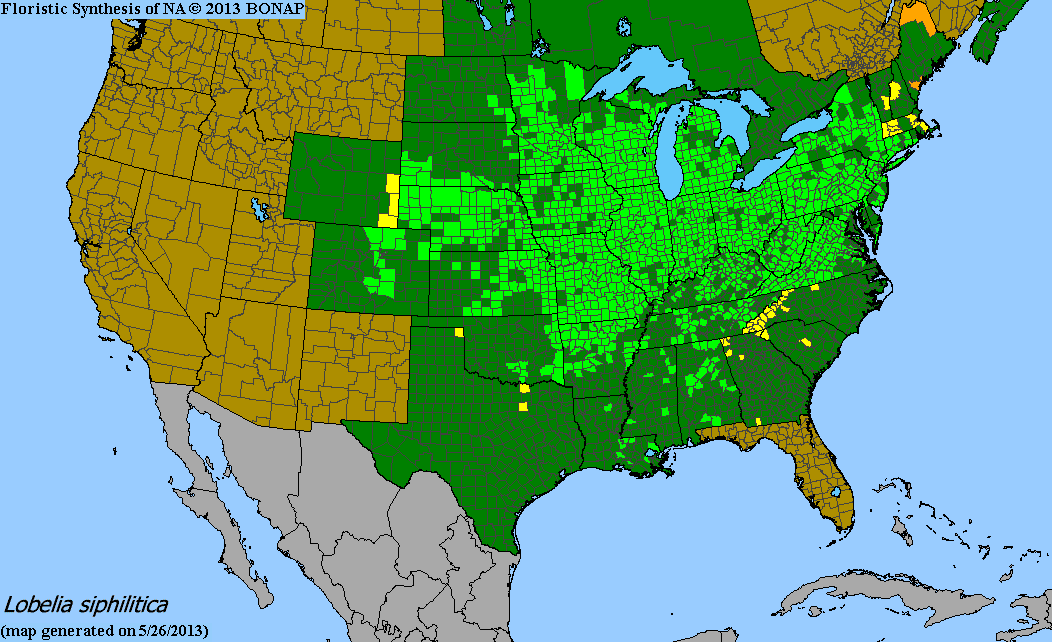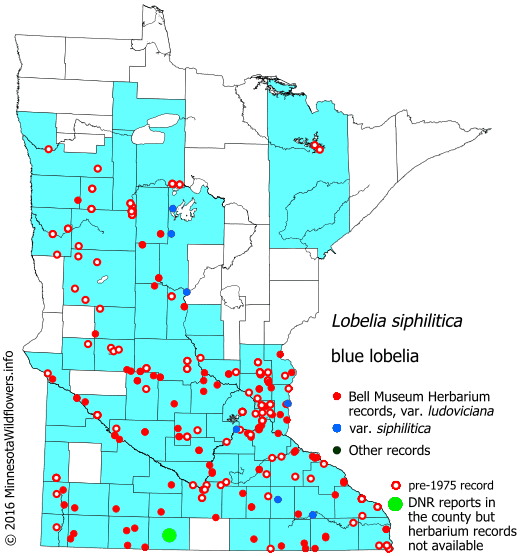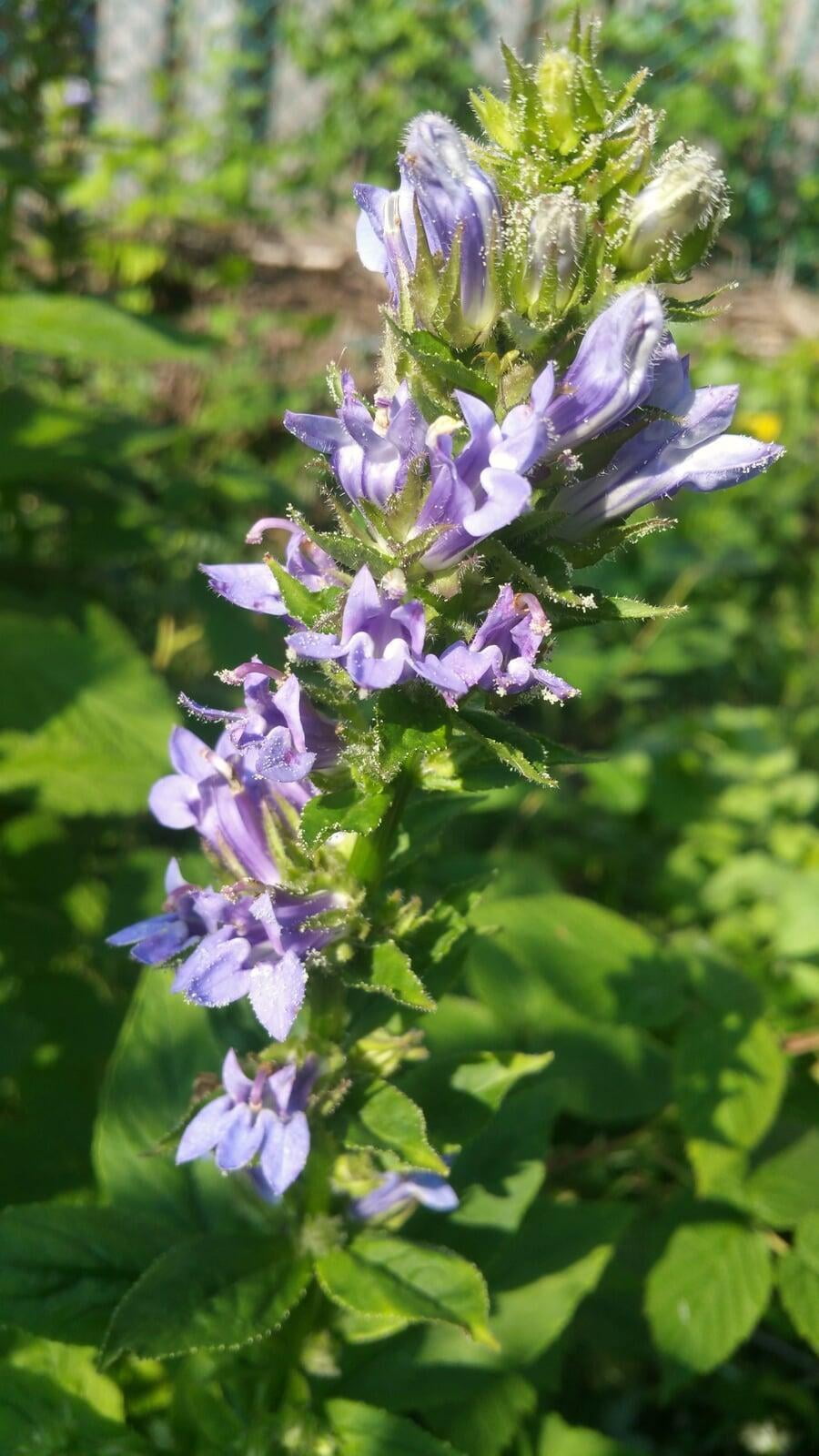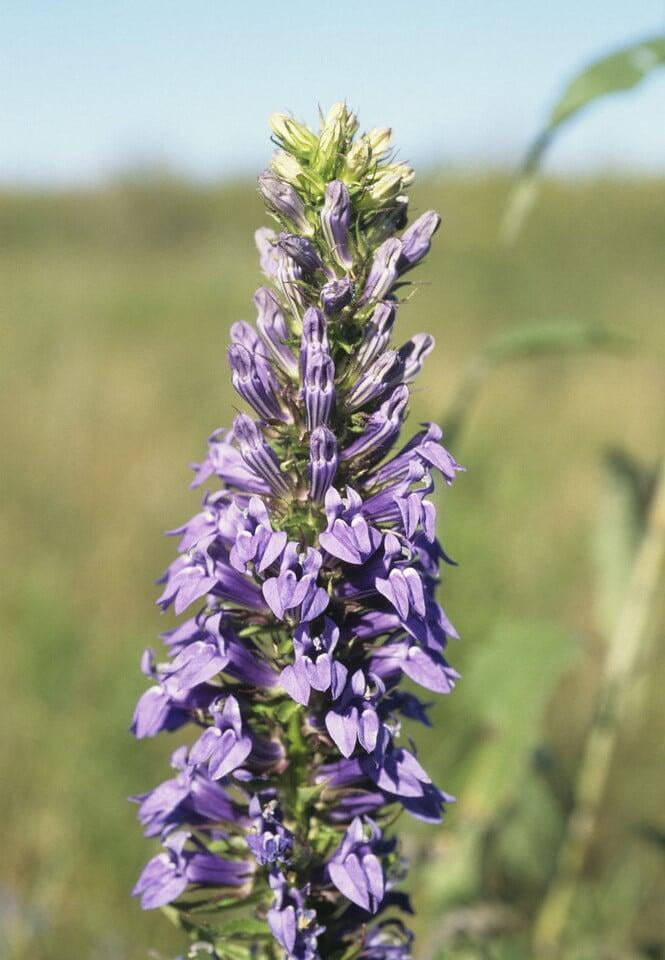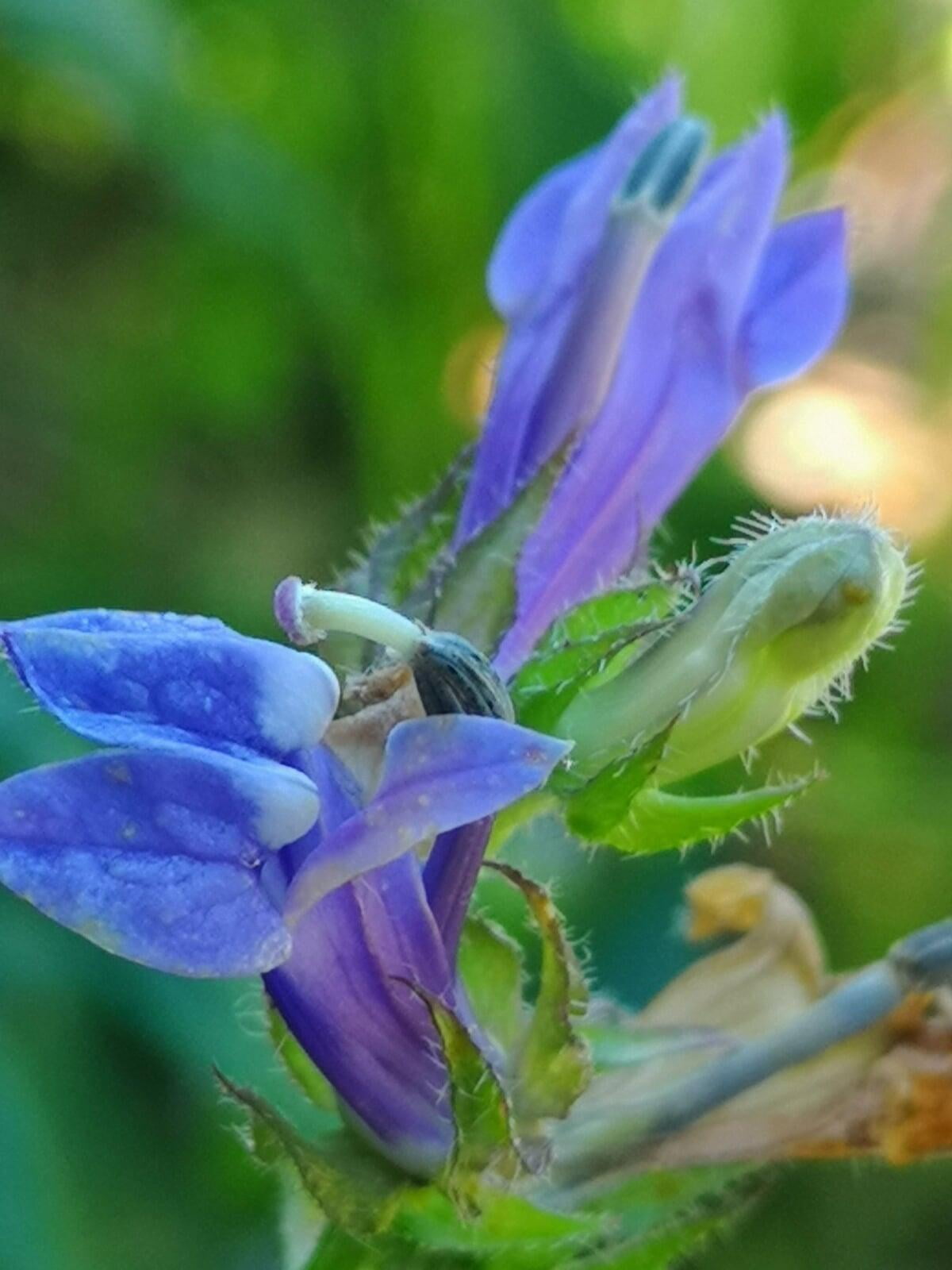Lobelia siphilitica
Blue lobelia Description:
Lobelia siphilitica, commonly known as great blue lobelia or blue cardinal flower, is a herbaceous perennial plant that belongs to the Campanulaceae family. It is native to North America, where it can be found growing in wetlands, meadows, and along streams and riverbanks.
The plant typically grows to a height of 1-4 feet and spreads to about 1-2 feet in width. It has lance-shaped, dark green leaves that grow up to 4 inches long and 1 inch wide, and form a basal rosette. The leaves are arranged alternately on the stem, which is typically smooth and erect.
In mid to late summer, the great blue lobelia produces spikes of showy, deep blue, tubular flowers with two lips that are about 1 inch long. The flowers are arranged in a dense, terminal raceme that can be up to 8 inches long. The nectar-rich flowers are particularly attractive to hummingbirds, butterflies, and bees, and are often used as cut flowers.
Lobelia siphilitica is a popular garden plant and can be grown in moist to wet soil conditions in full sun to partial shade. It is a good choice for rain gardens, water gardens, and naturalized areas, as well as for attracting wildlife to the garden. The plant has a number of medicinal uses and has been traditionally used as a herbal remedy for a variety of ailments.
Native Range:
Blue lobelia can be found natively in the central and Eastern United States.
Standard Plant Information:
Plant Height: 1' - 4'
Bloom Time: July - October
Preferred Habitat: Does well in part shade to full sun. Often found in moist fields and along shorelines.
Sowing:
For most homeowners, the best option is to scatter seed on the ground by hand broadcasting at a minimum of 16-64 pls ounces per acre. For even coverage, we recommend that you broadcast seed in perpendicular rows across the site to ensure even coverage.
You’ll want to broadcast any grass seed first, which will get raked into the soil lightly. Next, it is ideal to mulch the area lightly with either a clean (no seed) straw or preferably with our native Little Bluestem straw, sold at our retail garden centers. After a light mulching is complete, now it’s time to broadcast your native wildflower seeds, which should not be raked into the soil. A good rain or watering is sufficient to cover the seed.
Planting:
Simply dig a hole in the soil slightly larger than the plant’s roots. Ensure that the soil line of the plant is maintained during the transfer (i.e. the plant should be at the same level with the ground as it was in the pot). Pack any loose dirt back around the plant and make sure you water it well the same day to ensure it has the best chance of survival.


